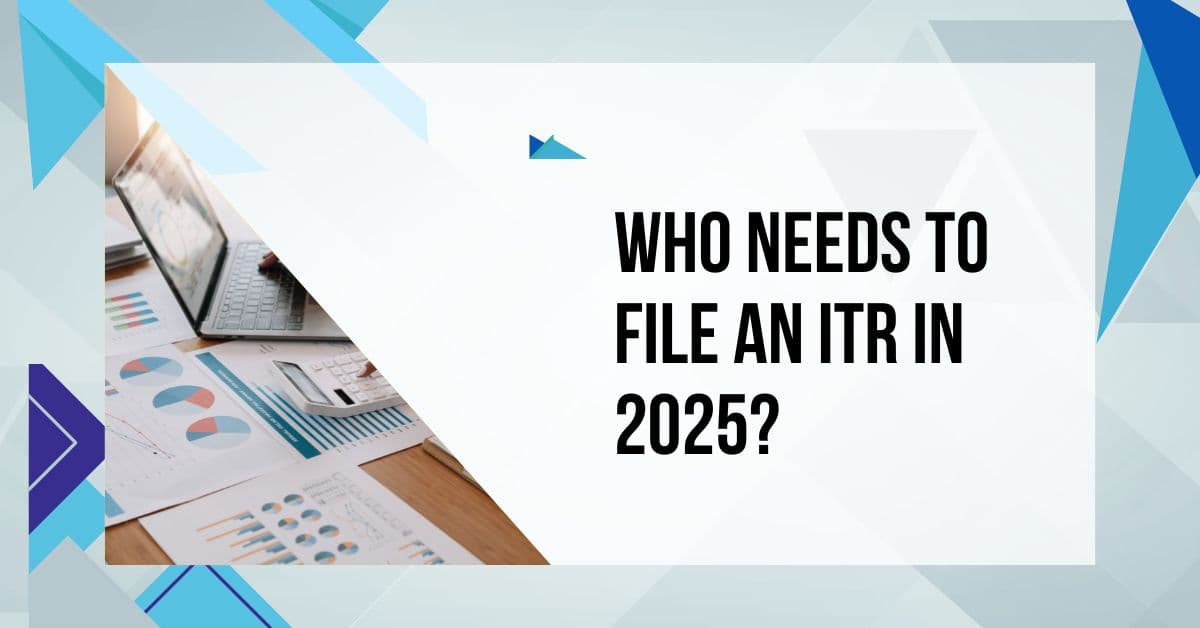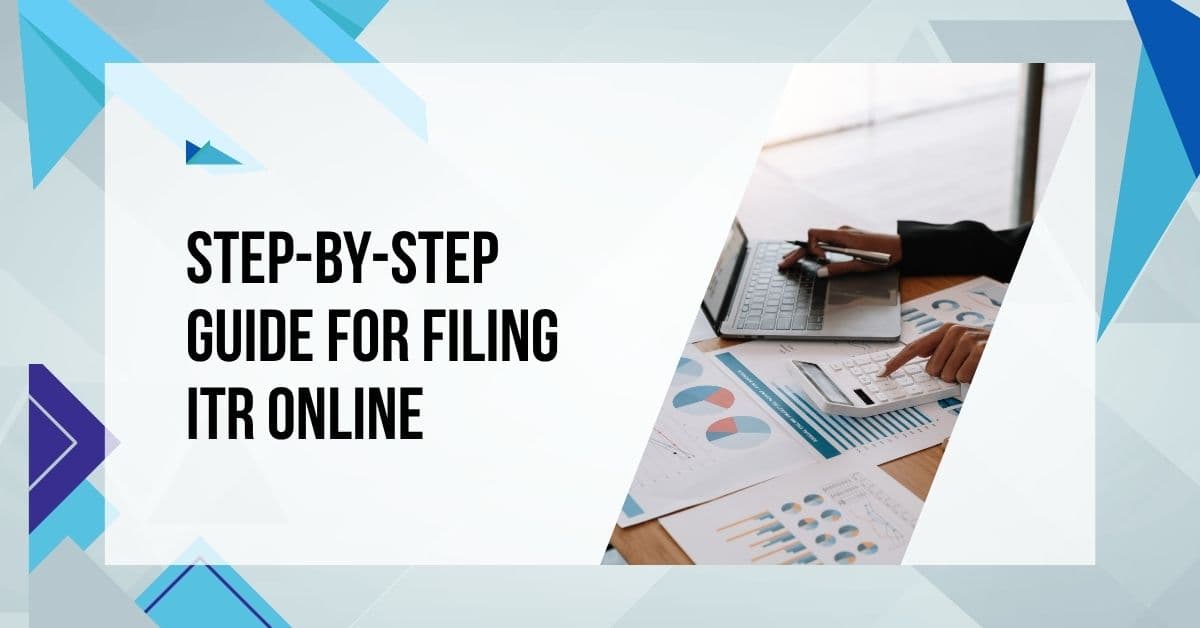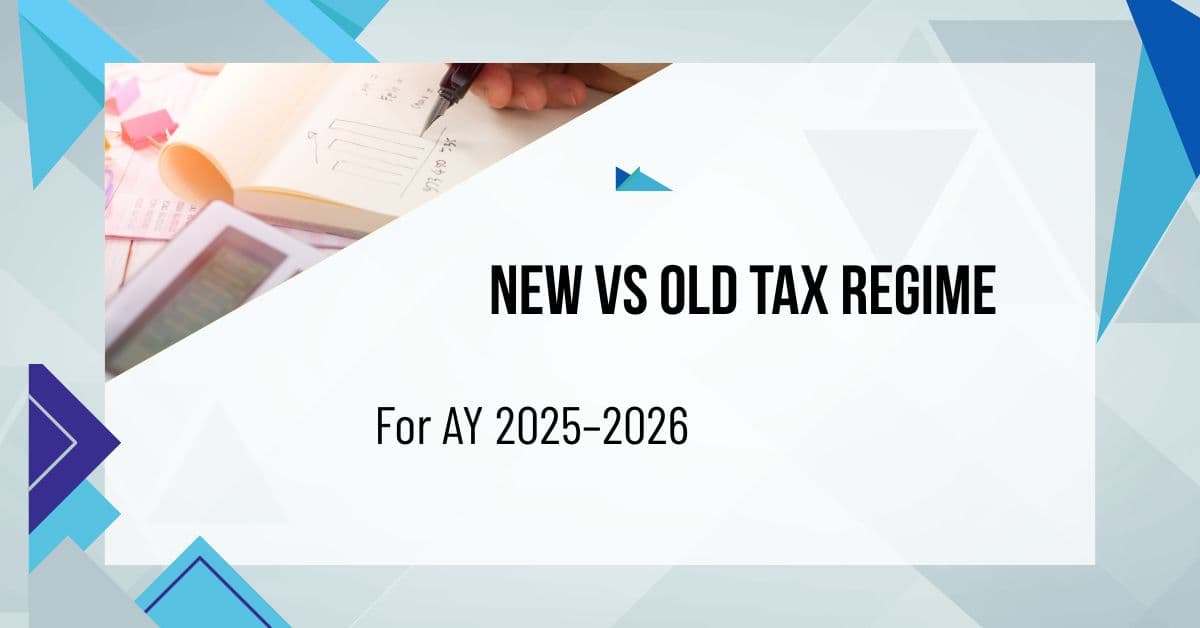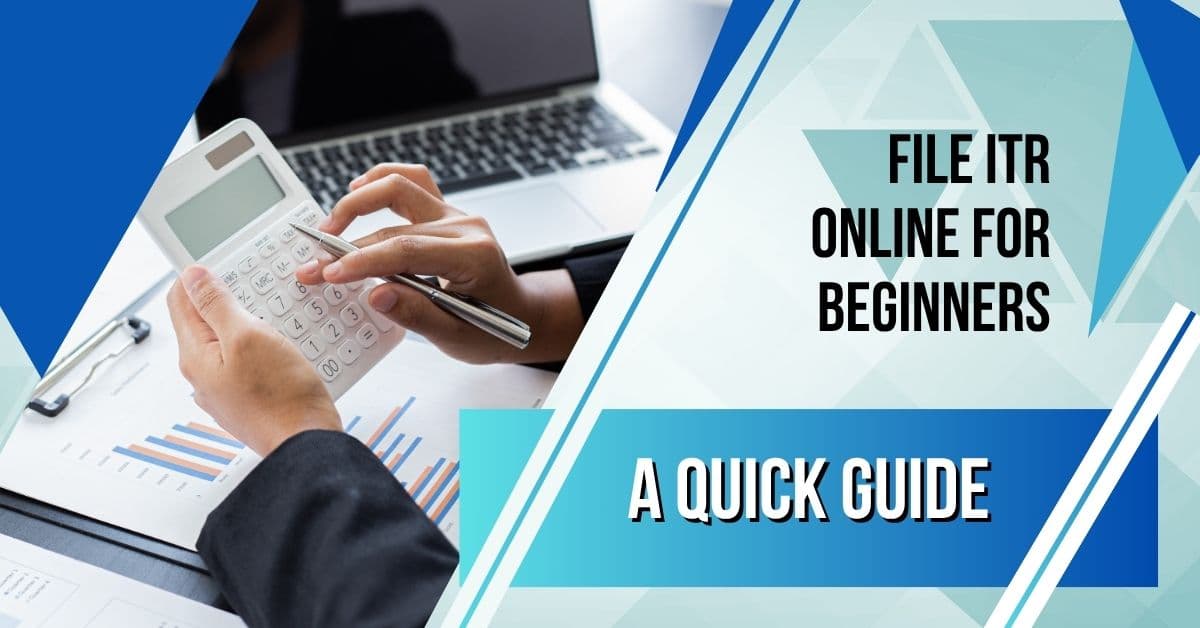File ITR Online for Beginners: For Indian taxpayers, filing an Income Tax Return (ITR) is essential for preserving a financial record for loans or visas, claiming refunds, and guaranteeing conformity with the Income Tax Act. Although the procedure may appear daunting to beginners, it is made simple and effective by the Income Tax e-filing portal and programs like ClearTax. Online filing has become the favoured way in 2025, with over 7.5 crore ITRs filed digitally in AY 2024–2025. This tutorial provides forms, procedures, and advice on how to avoid typical problems while filing an Indian tax return online for the fiscal year (FY) 2024–2025 (assessment year 2025–2026).
What is an ITR?
The Income Tax Department receives an ITR, a form that details your income, deductions, and tax payments for a certain fiscal year. The year after the fiscal year in which money is received is known as the assessment year (AY). The AY for FY 2024–2025 is 2025–2026. Reporting all sources of income, claiming allowable deductions, and paying off tax debts are all guaranteed when you file an ITR.
Who Should File an ITR?

Depending on their income or particular financial activity, certain people are required to file an ITR. You can be required to file under some circumstances even if your income is below the exemption threshold. Who is required to file for FY 2024-25 (AY 2025–26) is broken down as follows:
Income-Based Criteria
If your gross total income (before deductions under Chapter VI-A, such as Sections 80C or 80D) is more than the basic exemption level, you are required to submit an ITR:
Old Tax System:
- It is ₹2.5 lakh for anyone under 60.
- Senior persons (60–80 years old) pay ₹3 lakh.
- Super elderly folks (those above 80) pay ₹5 lakh.
Under the new tax regime: Everyone, regardless of age, will pay ₹3 lakh.
Additional Conditions
If you fulfil any of the following requirements, you must file even if your income is below the exemption limit:
- In a single financial year, more than ₹1 crore was deposited in one or more current accounts.
- Made deposits into one or more savings bank accounts totalling over ₹50 lakh.
- Incurred costs for your or another person’s overseas journey exceeding ₹2 lakh.
- Above ₹1 lakh in actual energy usage costs throughout a fiscal year.
- Possess a business with total sales, turnover, or gross revenues of more over ₹60 lakh.
- Earn more than ₹10 lakh in total gross income from their career.
- Own at least ₹25,000 in total Tax Collected at Source (TCS) and Tax Deducted at Source (TDS) (₹50,000 for senior persons).
- Have foreign assets (including the ability to sign international accounts) or get income from sources outside of India.
- Possess unlisted equity interests or serve as a director of a business.
Advantages of Filing, Even if It’s Not Required
When no taxes are due, filing a “Nil ITR” can:
- Assist with excess TDS refund claims.
- Act as evidence of income for visas or loans.
- Permit losses (from capital gains, for example) to be carried over for future set-off.
Beginners usually use ITR-1 for salaried persons with simple earnings (such as salary and bank interest), while ITR-2 may be required for those with multiple sources, such as capital gains.
Documents Required to File an ITR
Your income sources and the ITR form you select will determine which papers are needed. A thorough list to guarantee a simple filing process is provided below:
General Records
- PAN Card: The e-filing portal’s user ID is your Permanent Account Number.
- Aadhaar card: For registration and e-verification by OTP, an Aadhaar card is necessary.
- Form 26AS: which is accessible through the e-filing site, displays the TDS, TCS, advance tax, and self-assessment tax paid.
- Annual Information Statement (AIS): TDS/TCS, interest, dividends, and stock transactions are all included in the Annual Information Statement (AIS).
- Taxpayer Information Statement (TIS): A summary of AIS data per category is called a Taxpayer Information Statement (TIS).
- Details of the bank account: Refunds are linked to PAN, which includes the account number and IFSC code.
For Salaried Individuals
- Form 16 (Parts A and B): Your employer will provide Form 16 (Parts A and B), which details your pay and TDS.
- Salary Slips: For a monthly summary of taxable benefits (such as LTA and HRA).
- Exemption details: include documentation of Leave Travel Allowance (LTA), House Rent Allowance (HRA), etc.
For House Property Income
- Details of Rental Income: Tenant information (Name, PAN/Aadhaar), rent agreements.
- Property Information: Address and, if relevant, co-owner information.
- Home Loan Interest Certificate: A certificate from your lender attesting to the principle and interest paid on your home loan.
- Municipal Tax Receipts: Property tax receipts from the municipality.
Regarding Capital Gains
- Property transactions: Include deeds of sale or purchase, documentation of exemption (such as Section 54), improvement expenditures, and transfer fees.
- Mutual Funds/Equity Shares: Consolidated capital gain statements from brokers, Kfintech, or CAMS for mutual funds or equity shares.
- Additional Assets: Details on the purchase price and sale consideration.
Regarding Interest Income
- Bank Statements/Passbooks: For interest on fixed deposits and savings accounts.
- TDS certificates: Banks and other organisations provide TDS certificates in order to collect interest money.
For Tax Saving Investments and Deductions
- Section 80C Investments: Up to ₹1.5 lakh in receipts for National Savings Certificates (NSC), Equity-Linked Savings Scheme (ELSS), Life Insurance Corporation (LIC) premiums, and Public Provident Fund (PPF) contributions.
- Additional deductions: Include evidence of Provident Fund payments, children’s tuition, health insurance premiums (Section 80D), principal repayment on house loans, and interest on education loans (Section 80E).
- Receipts for donations: For Section 80G deductions.
- Form 10-IA: For disability-related deductions under Sections 80DD or 80U.
Regarding Foreign Income or Assets
- Information about Overseas Income: From jobs, investments, or other means.
- Form 67: Used in double taxation avoidance agreements to seek foreign tax credits.
Remarks
- To answer any questions the Income Tax Department may have, preserve papers for a minimum of seven years.
- ITR filing is annexure-less; you must save your papers for audits but are not required to attach them.
- To streamline the process, use systems such as ClearTax to automatically get data from Form 16 and Form 26AS.
| Category | Key Documents |
| General | PAN, Aadhaar, Form 26AS, AIS, TIS, Bank Account Details |
| Salaried Individuals | Form 16, Salary Slips, Exemption Proofs (HRA, LTA) |
| House Property | Rent Agreements, Tenant Details, Interest Certificate, Municipal Tax Receipts |
| Capital Gains | Sales/Purchase Deeds, Capital Gain Statements, Other Asset Details |
| Interest Income | Bank Statement, TDS Certificates |
| Tax-Saving Investments | PPF, ELSS, LIC Receipts, PF Contributions, Tuition Fees, Home Loan Certificates |
| Foreign Assets/Income | Overseas Income Details, Form 67 |
Step-by-Step Guide for Filing ITR Online

Using the Income Tax e-filing site or guided platforms like ClearTax or Tax2win, filing an ITR online is a simple process, especially for novices. The phases for FY 2024-25 (AY 2025–26) are as follows:
Register or Login:
- Go to incometax.gov.in and select “Register” to either log in with your current login information or establish an account using your PAN as the user ID.
- Use an OTP to confirm your email address and cellphone number.
Go to Filing:
- Navigate to “File Income Tax Return” under “e-File” > “Income Tax Returns.”
Choose the Assessment Mode and Year:
- For FY 2024–2025, pick AY 2025–2026 and then “Online” option.
Select the Filing Status:
- Click “Continue” after selecting “Individual” (or HUF, if applicable).
Select the correct ITR Form:
Use the “Help me decide which ITR Form to file” function on the portal, or select:
- ITR-1 (Sahaj): Residents with incomes up to ₹50 lakh from salaries, one home, family pensions, agricultural income (up to ₹5,000), and other sources such as bank interest are eligible to file an ITR-1 (Sahaj).
- ITR-2: For people or HUFs who don’t have any business income, including capital gains or profits from several properties.
- ITR-3: For people or HUFs who earn money from their businesses or professions.
- ITR-4 (Sugam): For presumed business revenue, use ITR-4 (Sugam).
Specify the Reason for Filing:
- Choose justifications such as “high-value transactions” (such as ₹1 crore in current accounts) or “income exceeding the basic exemption limit.”
Enter the following information:
Form 16, Form 26AS, and AIS data are pre-filled by the site. Put in:
- Details of income: Include capital gains, interest, residential property, and salary.
- Deductions: If choosing the Old Tax Regime, under Sections 80C, 80D, 24(b) (home loan interest), etc.
- Taxes Paid: Self-assessment tax, advance tax, TDS, or TCS.
- Bank Details: Make sure the account is connected to your PAN in order to get reimbursements.
Verify and calculate taxes:
- Verify the correctness of each entry. Your tax liability or required refund is calculated by the site.
Submit the Return:
- Check the return, edit it, and send it in. Get the acknowledgement (ITR-V) that was sent to the email address you registered.
E-Verify the Returns:
Within 30 days, confirm using:
- OTP for Aadhaar
- Net banking’s Electronic Verification Code (EVC)
- Certificate of Digital Signature (DSC)
- Although e-verification is quicker, a signed ITR-V should be sent to CPC, Bangalore.
Alternative Option: For guided filing, use services such as ClearTax or Tax2win. Perfect for beginners, these applications automatically retrieve data, recommend the appropriate ITR form, and offer detailed guidance.
New Tax Regime vs Old – What Save You More?

Common Mistakes To Avoid
Beginners frequently make mistakes that result in fines, notifications, or postponed reimbursements. Based on observations from IndiaFilings and Tax2win, the following are important errors to avoid:
Selecting the Incorrect ITR Form:
- According to Section 139(9), filing ITR-1 for capital gains or ITR-2 for business income may result in a faulty return notice. Make the right form choice by using the portal’s tool or speaking with a CA.
Incorrect bank or personal information:
- PAN, Aadhaar, name, address, or bank account errors may cause reimbursements to be delayed or render the return void. Verify all entries one more time against official records.
Referencing the Wrong Assessment Year:
- The proper AY for FY 2024-25 is 2025-26. Here, errors may result in warnings or sanctions.
Not Reporting Every Source of Income:
- Notices may be issued for failure to disclose interest from capital gains, fixed deposits, savings accounts, or cryptocurrency income (Schedule VDA). Make a reconciliation with AIS and Form 26AS.
Not Complementing Form 26AS:
- Form 16 and Form 26AS discrepancies (such as undeclared TDS) may result in less refunds or more scrutiny. Check all of the tax credits.
Making incorrect deductions:
- Only allowable deductions (such as ₹1.5 lakh under Section 80C) should be claimed, together with the appropriate paperwork. Penalties may result from false or ineligible claims.
Not Using E-Verify:
- Returns are deemed invalid if they are not validated within 30 days. For speedy verification, use online banking or Aadhaar OTP.
Avoiding Clubbing Earnings:
- To prevent underreporting, include income from a spouse or minor kid (such as FD interest), with a ₹1,500 exemption per child.
Failure to Maintain Proof of Deductions:
- For seven years, keep track of your investments (such PPF and LIC) and costs (like HRA receipts) in case of an audit.
Absence of Advance or Self-Assessment Tax Payment:
- You must pay advance tax on a quarterly basis if your tax amount exceeds ₹10,000. Section 234A imposes interest on unpaid taxes.
Sending Invoices That Are Not Real:
- Steer clear of false HRA or Section 80C deduction claims as they may result in fines or legal action.
Not submitting the necessary forms:
- Before filing your ITR, file Form 67 for international tax credits or Form 10-IA for deductions under Sections 80DD or 80U.
You may guarantee a seamless filing procedure and steer clear of issues with the Income Tax Department by fixing these errors.
Tips for Beginners
- Get Started Early: To escape the hurry of the September 15, 2025 deadline, start in June or July.
- Use Guided Platforms: For beginners, apps such as ClearTax or Tax2win provide detailed instructions.
- Verify Information: Verify the bank account details, Aadhaar, and PAN twice.
- Maintain Records: For future use, keep Form 16, ITR-V, and investment evidence.
- Seek Professional Assistance: Use IndiaFilings to speak with a CA for complicated revenues (such as capital gains).
Frequently Asked Questions (FAQs)
What is the AY 2025–2026 ITR filing deadline?
For non-audit situations, the deadline has been extended from July 31, 2025 to September 15, 2025.
Can non-professionals file their ITRs without a CA?
Yes, for straightforward situations, the e-filing system and tools like ClearTax make it simple.
What occurs if I fail to meet the deadline?
By December 31, 2025, submit a late return, which may result in fines and interest.
Which form is appropriate for salaried individuals?
ITR-1 for earnings up to ₹50 lakh from interest, a single home, or a wage.
How can my ITR be e-verified?
Use DSC, online banking, or Aadhaar OTP for speedy verification.
An Example from Real Life
- Situation: Saniya, a 28-year-old Bengaluru-based salaried professional who makes ₹8 lakh a year, submits her first ITR.
- Action: She uploads Form 16 and bank interest information, registers on the Income Tax system, and utilises ITR-1. She uses Aadhaar OTP to e-verify her claim of ₹1.5 lakh under Section 80C (Old Regime).
- Result: Saniya uses ClearTax to file before August 2025, avoid penalties, and get a ₹20,000 refund. The procedure takes 25 minutes.
Conclusion
The user-friendly Income Tax e-filing platform and tools like ClearTax make it easy for beginners to file their ITR online in India for AY 2025–2026. You may create a financial record, claim refunds, and comply with tax rules by selecting the appropriate form, assembling supporting documentation, and e-verifying. To guarantee a seamless experience, start early, make advantage of guided platforms, and seek advice from a CA for difficult issues. Handle your taxes now by filing before September 15, 2025!
Disclaimer: Each situation is unique when it comes to filing taxes. Seek guidance from a tax expert for individualised guidance.
How to Use Amex Platinum Credit Card for Smart Tax Planning in 2025
Sensex Nifty Stock Market: Last-Minute Tax Moves!
Bank Nifty Today: Smart Tax Planning Moves You Shouldn’t Miss!

